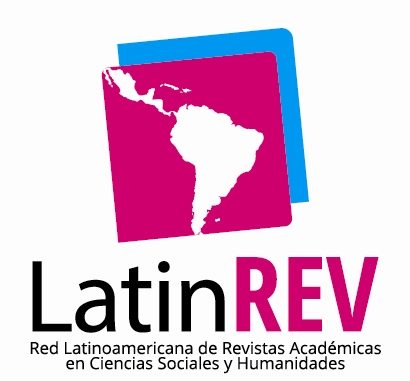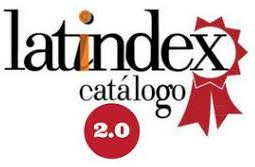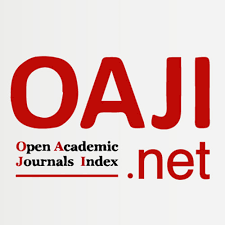Introduction to Dossier: The Third Reich, World War II, and the Holocaust: Argentine Perspectives, Experiences, and Aftermath. An Introduction
Downloads
References
Albarracín, A. (2019). Detención de ciudadanos argentinos en zona ocupada, 1941: neutralidad y política interna. Actas II Jornada El Holocausto: miradas y experiencias argentinas. A 80 años del estallido de la Segunda Guerra Mundial. Universidad de Buenos Aires, Buenos Aires, Argentina.
Avni, H. (1983). Argentina y la historia de la inmigración judía. 1810-1950. Editorial Universitaria Magnes, Universidad Hebrea de Jerusalén.
Avni, H. (2005). Argentina y las migraciones judías. De la Inquisición al Holocausto y después. Milá.
Bankier, D. y Michman, D. (eds.). (2008). Holocaust Historiography in Context. Emergence, Challenges, Polemics and Achievements. Yad Vashem.
Bauer, Y. (2001). Rethinking the Holocaust. Yale University Press.
Bisso, A. (2016). El Holocausto consumado. Los crímenes de guerra nazis percibidos desde otros lejanos tilos. El Proceso de Nuremberg y los procedimientos de juzgamiento en Dachau según el diario El Día de La Plata (1945-1948). Temas De Nuestra América. Revista de Estudios Latinoamericanos, 32(60), 169-186.
Breitman, R. y Goda, N. J. W. (2010). Hitler’s Shadow: Nazi War Criminals, U.S. Intelligence, and the Cold War. U.S. National Archives.
Browning, Ch. R. (2002). Aquellos hombres grises. El Batallón 101 y la Solución Final en Polonia. Edhasa.
Chinski, M. (2015). La representación del “horror nazi” en la prensa argentina. Revista de Estudios Sociales, (54), 120-133
Chinski, M. (2018). La AMIA y el monumento al “mártir desconocido” en el Cementerio Israelita de La Tablada en M. Bjerg e I. Cherjovsky (comps.), Identidades, memorias y poder cultural en la Argentina (siglos XIX al XXI) (pp. 161-198). Universidad Nacional de Quilmes.
Cohen, B. (2013). Israeli Holocaust Research: Birth and Evolution. Routledge.
Devoto, F. J. (1999). Las políticas migratorias argentinas (1930-1955), continuidades, tensiones, rupturas. CEANA, informe final.
Ebel, A. (1971). Das Dritte Reich und Argentinien. Die diplomatischen Beziehungen unter besonderer Berücksichtigung der Handelspolitik, 1933-1939. Böhlau Verlag.
Efron, G. y Brenman, D. (2007). La prensa gráfica argentina ante el nazismo y la Shoá. Índice, 37(25), 201-236.
Escudé, C. (1986). La Argentina vs. las grandes potencias. Editorial de Belgrano.
Feierstein, D. y Galante, M. A. (2001). La Cancillería argentina ante la Shoá. Representaciones y prácticas en torno al amparo diplomático. Índice, (21), 209-284.
Friedmann, G. (2010). Alemanes antinazis en la Argentina. Siglo XXI.
Furet, F. y Nolte, E. (1999). Fascismo y Comunismo. Fondo de Cultura Económica.
Gilbert, M. (2001). Holocaust Writing and Research Since 1945. USHMM, Center for Advanced Holocaust Studies.
Glocer, S. (2016). Melodías del destierro. Gourmet Musical.
Goñi, U. (2002). La auténtica Odessa. La fuga nazi a la Argentina de Perón. Paidós.
Gurevich, B. (ed.). (1998). Proyecto testimonio. Revelaciones de los archivos argentinos sobre la política oficial en la era nazi-fascista (Tomo I). Planeta.
Haffner, S. (1940). Germany: Jekyll & Hyde. Secker and Warburg.
Hayes, P. (2017). Why? Explaining the Holocaust. W.W. Norton & Company.
Hilberg, R. (1996). The Politics of Memory. The Journey of a Holocaust Historian. Ivan R. Dee.
Hobsbawm, E. (1998). Sobre la historia. Crítica.
Hobsbawm, E. (2 de abril de 2000). Cuando la pasión ciega a la historia. Clarín.
Jackisch, C. (1989). El nazismo y los refugiados alemanes en la Argentina. Editorial Belgrano.
Jackisch, C. (1999). Cuantificación de criminales de guerra según fuentes argentinas. CEANA, informe final.
Jackson, R. J. (21 de noviembre de 1945). Alegato de apertura de la Fiscalía ante el Tribunal Militar Internacional.
Kahan, E. (2022). La recepción del Holocausto en Argentina: visibilidad y usos de una experiencia sensible. Nuestra Memoria, (40), 69-78.
Kershaw, I. (2004). La dictadura nazi, problemas y perspectivas de interpretación. Siglo XXI.
Klich, I. (ed.). (2002). Sobre nazis y nazismo en la cultura argentina. Hispamérica.
Klich, I. y Buchrucker, Ch. (comps.). (2009). Argentina y la Europa del nazismo. Siglo XXI.
Klich, I. y Rapoport, M. (eds.). (1997). Discriminación y racismo en América Latina. Grupo Editor Latinoamericano.
Kolb, E. (2011). Bergen-Belsen. Geschichte des “Aufenthaltslagers” 1943-1945. Lit-Verlag.
Lvovich, D. (2003). Nacionalismo y antisemitismo en la Argentina. Vergara.
Marrus, M. R. (1987). The Holocaust in History. University Press of New England.
Mattina, M. (2022). El Holocausto en los Países Bajos a la luz de una trayectoria familiar en C. Biernat y N. Vasallo (coords.), Historia Contemporánea. Problemas, debates y perspectivas (pp. 523-536). Editorial de la Universidad Nacional del Sur.
Meding, H. (1999). La emigración a la República Argentina de los nacionalsocialistas buscados. Una aproximación cuantitativa. CEANA, informe final.
Meding, H. (2000). La ruta de los nazis en tiempos de Perón. Emecé.
Meding, H. e Ismar, G. (comps.). (2008). Argentinien und das Dritte Reich. Mediale und reale Präsenz, Ideologietransfer, Folgewirkung. Wissenschaftlicher Verlag.
Mommsen, H. (2000). Future Challenges to Holocaust Scholarship as an Integrated Part of the Study of Modern Dictatorship. USHMM, Center for Advanced Holocaust Studies.
Neumann, F. (1942). Behemoth: The Structure and Practice of National Socialism. Victor Gollancz Ltd.
Newton, R. C. (1995). El cuarto lado del triángulo. La “amenaza nazi” en la Argentina (1931-1947). Sudamericana.
Oliveira-Cézar, M. (2016). Los judíos y la Argentina en Francia ocupada. Dunken.
Page, J. A. (2009). Prólogo en I. Klich y C. Buchrucker (eds.), Argentina y la Europa del nazismo (pp. 7-15). Siglo XXI.
Peris, A. (2017). Gershon Willner: polaco, judío, argentino. Un estudio de caso sobre las víctimas argentinas del Holocausto en J. Opatrný (ed.), Las relaciones entre Europa central y América Latina. Contextos históricos. Universidad Carolina.
Potash, R. A. y Rodríguez, C. (1999). El empleo en el Ejército argentino de nazis y otros técnicos extranjeros, 1943-1955. CEANA, informe final.
Raber, A. (2022). Las organizaciones de socorro y la recepción de los sobrevivientes del Holocausto en Argentina. Nuestra Memoria, (40), 49-60.
Rapoport, M. (1985). Gran Bretaña, Estados Unidos y las clases dirigentes argentinas 1940-1945. Belgrano.
Rapoport, M. (1988). ¿Aliados o neutrales? Eudeba.
Rapoport, M. (1995). Argentina y la Segunda Guerra Mundial: mitos y realidades. Estudios Interdisciplinarios de América Latina y el Caribe, 6(1), 5-21.
Rapoport, M. y Musacchio, A. (1999). Transacciones del Banco Central de la República Argentina en oro y divisas con países del Eje y neutrales y su correlación con el comercio internacional de la Argentina. CEANA, informe final.
Ras, M. (2019). Israel Hecht. El destino de un “indeseable” argentino en el Tercer Reich. Actas II Jornada El Holocausto: miradas y experiencias argentinas. A 80 años del estallido de la Segunda Guerra Mundial. Universidad de Buenos Aires, Buenos Aires, Argentina.
Ras, M. (2023). El rol de Adolf Eichmann y la Embajada argentina en Berlín en la deportación de judíos con ciudadanía argentina. Historia y memoria. Ciclos, (60), 133-169.
Rein, R. (2015). Los muchachos peronistas judíos. Sudamericana.
Rousso, H. (1991). The Vichy Syndrome. History and Memory in France since 1944. Harvard University Press.
Ruiz Moreno, I. J. (1997). La neutralidad argentina en la Segunda Guerra Mundial. Emecé.
Sanchís Muñoz, J. R. (1992). La Argentina y la Segunda Guerra Mundial. Grupo Editor Latinoamericano.
Sanchís Muñoz, J. R. (2013). Los diplomáticos argentinos en la Segunda Guerra Mundial ante el Holocausto. Coloquio, (20).
Schlickers, S. (2021). De Auschwitz a Argentina. Representaciones del nazismo en literatura y cine 2000-2020. Biblos.
Schneppen, H. (2009). De todas las Odessas, aquella de Perón en I. Klich y C. Buchrucker (comps.), Argentina y la Europa del nazismo. Sus secuelas (pp. 183-245). Siglo XXI.
Senkman, L. (1991). Argentina, la Segunda Guerra Mundial y los refugiados indeseables (1933-1945). Grupo Editor Latinoamericano.
Stemplowski, R. (1976). Las potencias anglosajonas y el neutralismo argentino (1939-1945). Estudios Latinoamericanos, 3, 129-160.
Tato, M. I. y Romero, L. A. (2002). La prensa periódica y el régimen nazi en I. Klich (ed.), Sobre nazis y nazismo en la cultura argentina (pp. 157-175). Hispamérica.
Traverso, E. (2011). El pasado, instrucciones de uso. Prometeo.
Warzawski, P. (ed.). (1998). Proyecto testimonio. Revelaciones de los archivos argentinos sobre la política oficial en la era nazi-fascista (Tomo II). Planeta.
Wechsler, W. (2020). La historia de la memoria del Holocausto en Argentina. Cuadernos Judaicos, (35), 261-283.
Weinberg, G. L. (2008). Two Separate Issues? Historiography of World War II and the Holocaust en D. Bankier y D. Michman (eds.), Holocaust Historiography in Context. Emergence, Challenges, Polemics and Achievements (pp. 379-401). Yad Vashem.
Zertal, I. (2010). La nación y la muerte. La Shoá en el discurso y la política de Israel. Gredos.
Copyright (c) 2025 Marcia Ras, Samara Rose Angel

This work is licensed under a Creative Commons Attribution-NonCommercial 4.0 International License.

Historia & Guerra uses an international license Attribution-NonCommercial 4.0 International (CC BY-NC 4.0).
You are free to:
- Share — copy and redistribute the material in any medium or format.
- Adapt — remix, transform, and build upon the material.
- The licensor cannot revoke these freedoms as long as you follow the license terms..
Under the following terms:
Attribution — You must give appropriate credit, provide a link to the license, and indicate if changes were made. You may do so in any reasonable manner, but not in any way that suggests the licensor endorses you or your use.
NonCommercial — You may not use the material for commercial purposes.
No additional restrictions — You may not apply legal terms or technological measures that legally restrict others from doing anything the license permits.
Notices:
You do not have to comply with the license for elements of the material in the public domain or where your use is permitted by an applicable exception or limitation.
No warranties are given. The license may not give you all of the permissions necessary for your intended use. For example, other rights such as publicity, privacy, or moral rights may limit how you use the material.
The author retains all rights to his work without restriction and grants Historia & Guerra the right to be the first publication of the work. Likewise, the author may establish additional agreements for the non-exclusive distribution of the version of the work published in the Journal (for example, placing it in an institutional repository or publishing it in a book), with the acknowledgment of having been first published in this journal. Use of the work for commercial purposes is not permitted.
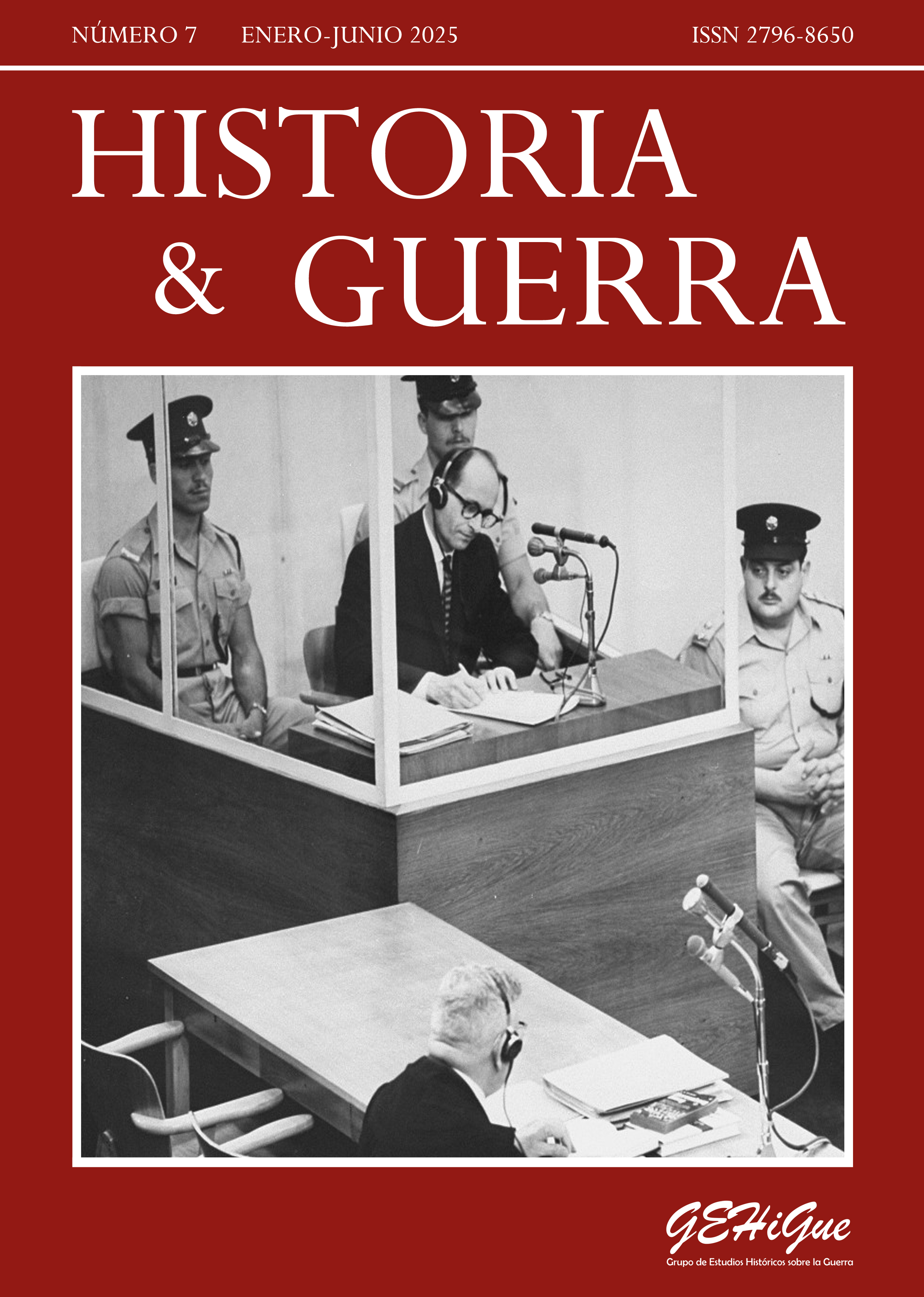








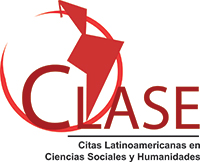



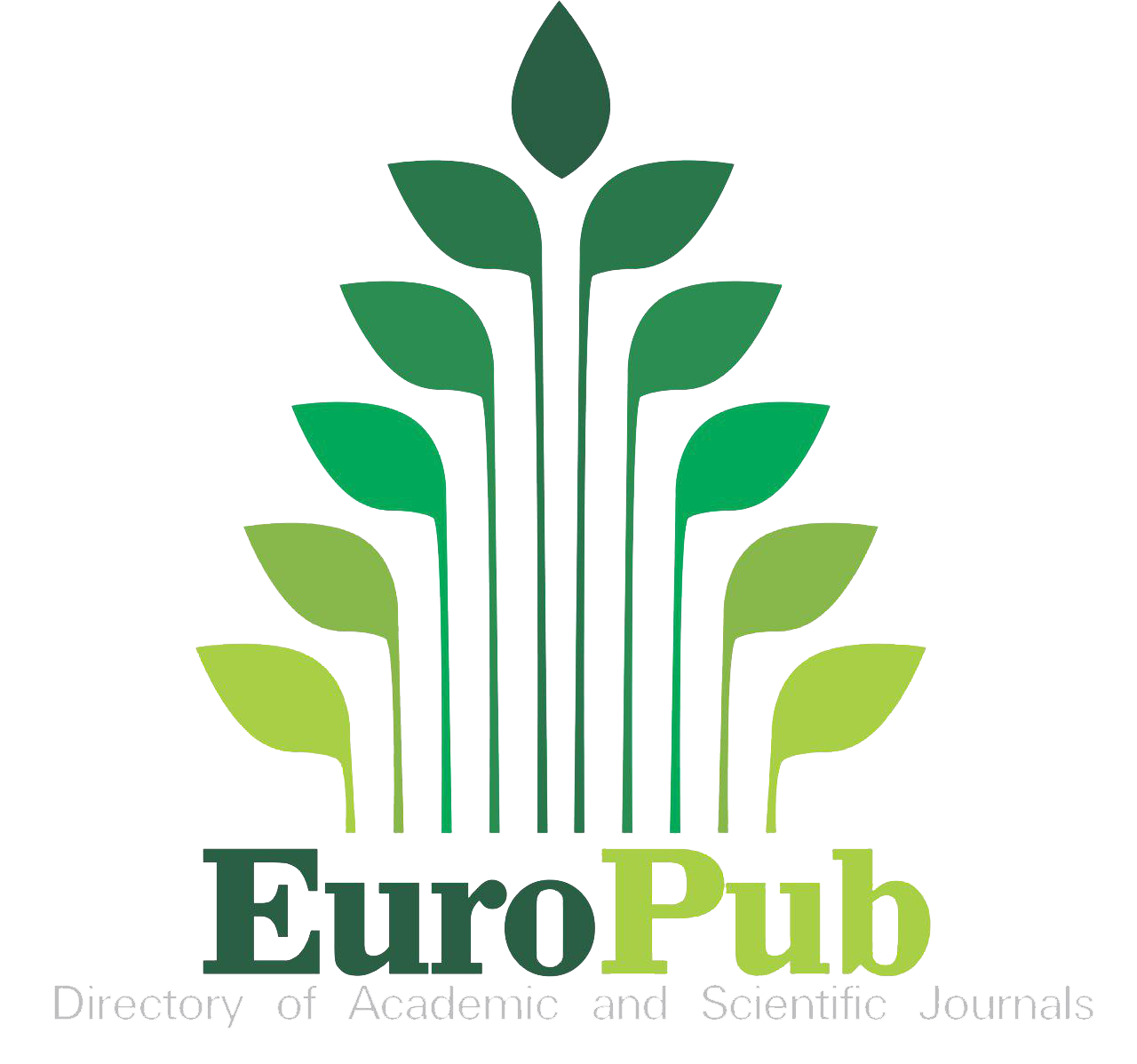
.jpg)
